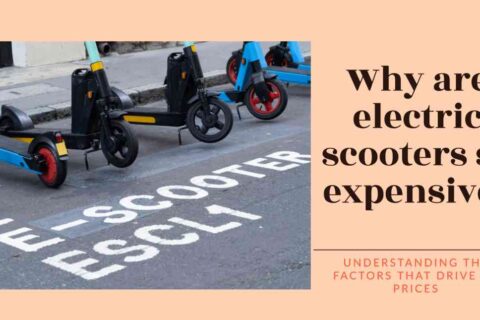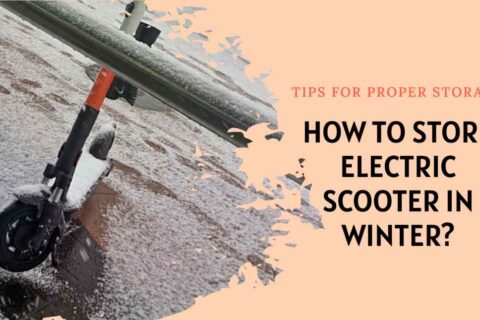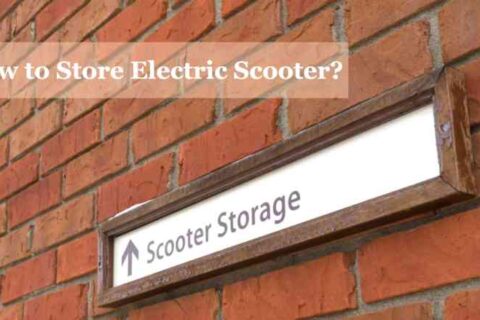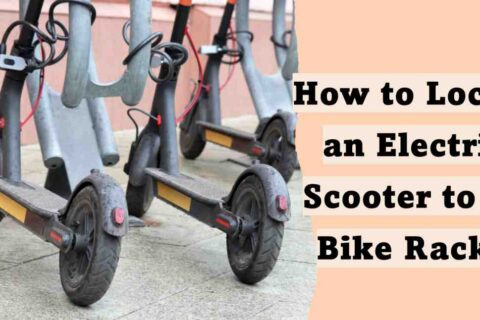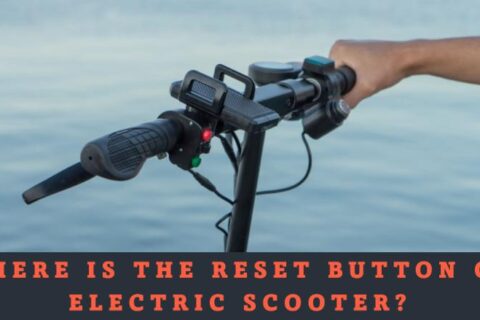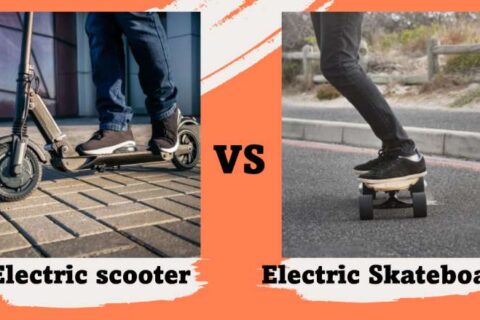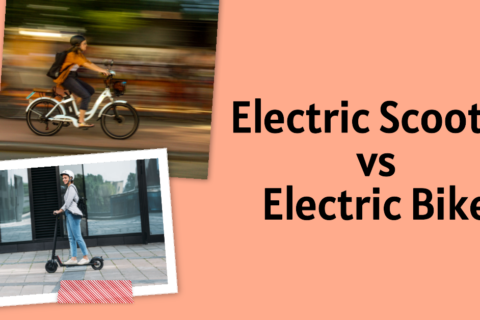Unfortunately, water damage can be a very frustrating setback for electric scooter owners. how to fix electric scooter water damage is crucial to restore functionality and prevent further damage.
We’ll provide you with a concise step-by-step process to fix a water-damaged electric scooter. By tracking these instructions, you’ll be able to address the damage, dry out the components, and perform necessary repairs or replacements.
Key Takeaways
- Signs of water damage in electric scooters
- Testing for water damage involves visual inspection
- Precautions before repair
- The repair step-by-step process
- Seek professional help for severe or complex damage.
- Preventive measures include checking the waterproof rating
- Conduct functional tests and troubleshoot after repairs to ensure optimal performance.
- Proactive measures can prevent water damage and prolong the lifespan.
Table of Contents
ToggleSigns of water damage in electric scooters
Here are some common signs that your electric scooter may have water damage:
- Malfunctioning lights – If the lights on your scooter are not working properly or flickering, it could be a sign of water damage. Water can interfere with the electrical connections and cause issues with the lighting system.
- Battery not holding a charge – Water damage can affect the performance of the battery. If you notice that your scooter’s battery is not holding a charge as it used to, it could be a result of water infiltration.
- Motor not working – Water can damage the motor of your electric scooter, leading to a loss of power or the motor not functioning at all. If you experience issues with the motor, water damage could be the culprit.
- Discoloration – Water damage may cause visible discoloration on the scooter’s exterior, indicating that water has penetrated the surface and affected the underlying components.
- Soft spots – When water seeps into the scooter’s body, it can lead to the formation of soft spots. If you notice areas of the scooter that feel soft or sponge-like, it’s a strong indication of water damage.
- Corrosion – Water exposure can cause corrosion on metal parts, such as screws, connectors, or the scooter’s frame. Look for rust or greenish deposits, as they are signs of water-related corrosion.
- Electrical shorts – Water can create electrical shorts, resulting in erratic behavior or a complete malfunction of the scooter’s electrical system. If you experience sudden shutdowns or unusual electrical issues, water damage may be the cause.
- Strange noises – Water damage can affect the internal components of the scooter, leading to strange noises during operation. If you hear unusual sounds like grinding, clicking, or buzzing, it’s worth investigating for water damage.
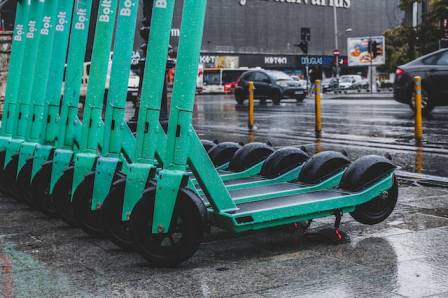
How to test if an electric scooter has water damage
To determine if your electric scooter has water damage, there are a few simple tests you can perform:
- Visual inspection:
Take a close look at your scooter for any visible signs of water damage such as rust, corrosion, or discoloration. These telltale signs often indicate that water has found its way into the scooter and may have caused damage to its internal components. - Battery voltage test:
Using a multimeter, set it to the voltmeter position (200V) and connect the test leads to the positive and negative terminals of the battery. If the voltage is significantly lower than the manufacturer’s specifications, it may indicate water damage. - Functional test:
After ensuring the scooter is dry and the battery is fully charged, reconnect the battery and test the scooter’s lights, motor, and other electrical components. If any of these are not functioning properly, it may indicate water damage affecting the scooter’s electrical system. - Seek professional help:
If you suspect water damage but are uncertain about the extent or how to proceed with repairs, it’s always wise to consult a professional. They have the expertise to conduct a thorough inspection, identify any water-related issues, and provide the necessary repairs.
Precautions Before Starting the Repair Process
Before diving into the repair process for a water-damaged electric scooter, it’s crucial to take some precautions to ensure your safety and prevent further damage.
Start by unplugging the scooter from its power source and removing the battery. This eliminates the risk of electrical shock and allows you to work on the scooter without any power supply.
Remember, do not attempt to turn on the scooter until you’ve assessed the extent of the water damage and taken steps to dry it out. Use a dry cloth to wipe down the scooter, removing any visible water and moisture.
Be particularly careful when handling electrical components, as water can cause short circuits and damage the scooter further.
Assess the damage and determine which parts need to be replaced. It’s essential to have the necessary tools and replacement parts ready before starting the repair process. This ensures you can work efficiently without any delays.
Step-by-Step Guide: how to fix electric scooter water damage?
Tools and equipment needed for the repair
- Dry cloth: Use this to wipe away any moisture and dry the scooter’s components.
- Screwdrivers: Have flathead, Phillips, and Torx screwdrivers on hand to help with disassembling and reassembling parts of the scooter.
- Multimeter: This handy device allows you to measure voltage, check for electrical issues, and assess the condition of the scooter’s battery.
- Hairdryer (optional): In some cases, a hairdryer can help dry out hard-to-reach areas or speed up the drying process. Be cautious not to overheat sensitive components.
Now follow this step-by-step guide to effectively fix your water-damaged electric scooter and get back on the road.
1. Drain and dry the scooter
Start by removing any excess water from the scooter. Tilt it to drain out any trapped water and use absorbent materials like towels or cloths to soak up the moisture. Pay special attention to the battery compartment and other areas where water may have accumulated.
2. Disconnect the battery
Before you begin working on your electric scooter, it’s essential to disconnect the battery. This simple step is crucial to prevent any electrical mishaps while you’re carrying out repairs or maintenance. To do this, locate the battery compartment of your scooter and carefully remove the battery.
3. Disassemble other affected parts
Carefully disassemble the scooter to access the internal components. Remove the scooter’s panels and other parts that have been exposed to water. It will give help to get access to the internal parts of the electric scooter. Take pictures or make notes during disassembly to ensure proper reassembly later.
4. Drying out the scooter components
To dry out the scooter component so effectively, there are a few techniques you can employ. Begin by gently wiping off any visible moisture with a clean, dry cloth. Once the initial moisture is removed, allow the components to air dry naturally in a well-ventilated area, away from direct sunlight and heat sources.
To expedite the drying process, you can utilize desiccants like silica gel packets or moisture-absorbing products. Place them alongside the components or tuck them inside the scooter’s panels and compartments.
Another option is to use uncooked rice, which can act as a temporary moisture absorber. Simply seal the disassembled parts in a bag or container with rice for a day or two. However, remember to clean the components afterward to remove any residual dust or debris from the rice.
Throughout the drying process, ensure proper air circulation by utilizing fans or gentle air blowers. This helps facilitate moisture evaporation. Just be cautious not to use excessive heat that could harm delicate electronic parts. Maintain a moderate airflow and periodically check the components to assess their dryness.
5. Check for Rust and Corrosion
When water damage affects your electric scooter, addressing rust and corrosion on the components is crucial. To clean rusted or corroded parts, start by gently using a wire brush or sandpaper to remove surface rust. Take care to avoid causing further damage.
For stubborn rust, apply a rust remover or a mixture of vinegar and baking soda, then rinse the parts thoroughly with clean water and ensure they’re completely dry before proceeding.
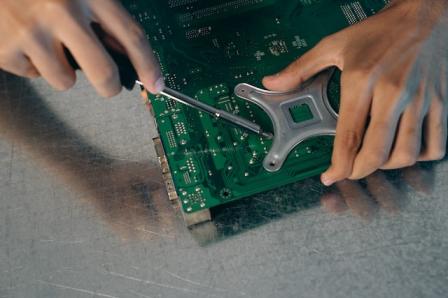
6. Inspect the Motherboard and Display Board for Oxidation
If your electric scooter has been exposed to water and you notice it malfunctioning, there’s a possibility that the issue stems from the controller or motherboard, which can become oxidized due to water damage.
To check for oxidation, locate the controller near the battery and inspect the circuit board for any signs of corrosion or discoloration, such as white or brown marks.
Similarly, if the handlebars of your scooter have been affected by water and the display is no longer functioning, follow the same process by visually examining the display card for water damage or oxidation.
Use a voltmeter to test the voltage of the display board. If it’s found to be defective, replace it with a suitable replacement. Taking these steps will help identify and address potential issues caused by water damage to ensure the proper functioning of your electric scooter. Remember, if you’re unsure or uncomfortable with the repair process, it’s always a good idea to consult a professional for assistance.
7. Replace damaged parts
Some components may be irreparable due to extensive water damage, and in such cases, it’s necessary to replace them. Identify the compromised parts, such as the battery, controller, wiring harnesses, and connectors, and source compatible replacements specific to your scooter’s make and model.
Inspect the wiring connections for any signs of damage, corrosion, or loose connections. Repair or replace any affected wires or connectors as necessary.
Double-check the compatibility of the new components and meticulously follow the installation instructions, paying attention to wiring connections and fasteners.
8. Reinstallation
When replacing damaged parts, ensure they are compatible with your specific electric scooter model. Follow manufacturer guidelines or seek professional assistance to ensure proper installation and alignment of the new components.
Once everything is dry and any damaged parts have been replaced, reassemble the scooter. Make sure all the components are securely in place and that all the screws and bolts are tightened.
Testing and Verifying the Repairs
Checking scooter functionality post-repair
Before taking your scooter out for a test ride, it’s essential to conduct a thorough check of its functionality. Start by inspecting all the repaired components, ensuring they are securely installed and connected.
Examine the wiring connections, making sure they are properly insulated and free from any damage or loose connections. Verify that the battery is fully charged and that all electrical systems are operational.
Test the lights, brakes, throttle response, and any other features specific to your scooter model. By methodically going through these checks, you can identify any potential issues that may require further attention.
Test riding and performance evaluation
Once you have confirmed the functionality of the repaired scooter, it’s time for a test ride. Start with short distances at moderate speeds, gradually increasing the duration and speed as you gain confidence in the scooter’s stability.
Pay close attention to how the scooter accelerates, handles turns, and brakes. Evaluate its overall performance, including the battery life and any noticeable changes from its pre-damage condition.
Fine-tuning adjustments, if necessary
During the test ride, you may identify minor issues or areas that require fine-tuning. It could be adjusting the brakes for optimal responsiveness or fine-tuning the throttle sensitivity.
Take note of any such adjustments that need to be made. Refer to the scooter’s manual or seek expert advice on how to perform these adjustments properly.

Troubleshooting Common Issues Caused by Water Damage
Water damage in electric scooters can lead to a variety of problems, affecting components such as the motor, battery, and controller. Let’s check some common troubleshooting:
Identifying specific problems after water exposure
Once your electric scooter has been exposed to water, it’s essential to conduct a thorough inspection to identify potential issues. Look for signs such as unusual sounds, reduced performance, or erratic behavior. Common problems resulting from water damage include motor malfunction, battery inefficiency, and controller or circuitry issues. Carefully observe and note any abnormalities to guide your troubleshooting process.
Fixing motor or battery issues
If you experience motor issues, such as decreased power or failure to start, begin by ensuring all electrical connections are secure and dry. Inspect the motor for signs of water damage, corrosion, or loose connections.
Battery issues may include reduced capacity, failure to hold a charge, or complete discharge. Start by disconnecting and inspecting the battery. Look for signs of water damage, corrosion on terminals, or faulty connections.
Dealing with controller or circuitry malfunctions
Water damage can disrupt the functioning of the controller or circuitry in your electric scooter.
If you encounter issues such as unresponsive controls, erratic behavior, or electrical shorts, it’s crucial to address them promptly.
Start by checking the controller for visible signs of water damage or corrosion. Inspect the wiring harnesses and connectors for any loose or damaged connections. Carefully clean the affected components and ensure proper insulation.
Professional Assistance: When to Seek Help
Signs indicating the need for professional repair
Certain signs indicate the need for professional intervention. If you encounter persistent issues or notice significant damage beyond your repair capabilities, it’s a clear indication that professional assistance is required.
Problems such as severe motor or battery damage, extensive corrosion, or complex wiring malfunctions are best handled by experts who have the knowledge, experience, and specialized tools to address these challenges effectively.
Locating reputable scooter repair services
Finding reputable scooter repair services is crucial to ensure your electric scooter is in capable hands. Start by asking for recommendations from fellow electric scooter owners or local scooter communities.
Online forums and social media groups dedicated to electric scooters can also provide valuable insights and recommendations.
Additionally, check online directories or review websites for reputable repair services in your area. Look for service providers with positive customer reviews, certifications, and expertise in electric scooter repairs.
Preventive Measures to Protect Your Electric Scooter from Water Damage
Checking Waterproof rating (IP rating)
To determine the waterproofness of your scooter, look for an international protection index (IP) on the scooter or its user manual. The IP is followed by two numbers that indicate the level of protection.
The first number represents protection against solid bodies, such as dust and debris, ranging from 0 to 6. The second number indicates protection against liquids, including water, on a scale of 0 to 9. A higher number indicates greater protection.
Typically, a scooter with an IP69 rating would have the highest sealing standard, but any number from 7 and above can be considered waterproof. If there are no specific protection criteria, the number is replaced with an X.
Most electric scooters have an IP54 rating, which means they are resistant to dust and can withstand low-pressure water splashes. They can handle light rain for a short period but should not be submerged.
Waterproofing strategies and tips
One of the most effective ways to safeguard your electric scooter from water damage is by employing waterproofing strategies.
Start by investing in a high-quality waterproof cover specifically designed for electric scooters. This cover will shield your scooter from rain, splashes, and other forms of water exposure when you’re not using it.
Consider applying a waterproof coating or spray on vulnerable areas such as the battery compartment, connectors, and wiring. This additional layer of protection can act as a barrier against water infiltration.
Proper scooter storage and maintenance
Proper storage and maintenance practices are crucial for protecting your electric scooter from water damage. When not in use, store your scooter in a dry and covered area to shield it from rain and other environmental elements.
If you live in an area with high humidity, consider using a dehumidifier in your storage space to reduce moisture levels.
Regularly inspect and maintain the scooter’s seals, gaskets, and connectors, ensuring they are intact and free from cracks or damage. Promptly address any issues to prevent water from seeping into sensitive areas.
Avoiding water exposure in different environments
Being mindful of water exposure in various environments is essential to prevent damage to your electric scooter. Avoid riding your scooter in heavy rain or through deep puddles where water can splash onto the electrical components.
If you encounter wet surfaces while riding, slow down and navigate carefully to minimize water splashes. When parking your scooter, choose areas away from sprinklers or areas prone to flooding.

Frequently Asked Questions (FAQ)
Can I fix my water-damaged electric scooter myself?
Yes, you can! With the right precautions and tools, you can follow our step-by-step guide to repair your water-damaged electric scooter.
How do I know if my electric scooter has water damage?
Look for signs like malfunctioning controls, corrosion, or unusual noises. These indicate water damage and the need for repair.
What safety measures should I take while repairing my scooter?
Ensure the scooter is disconnected from power, wear protective gear, and work in a well-ventilated area to avoid any accidents.
How can I prevent water damage to my electric scooter?
Waterproofing your scooter, storing it in a dry place, and avoiding water exposure in different environments are effective preventive measures.
Should I test the scooter after repairs?
Absolutely! Test the functionality, take a test ride, and make any necessary adjustments to ensure your scooter is working optimally.
How long does the repair process take?
The repair time depends on the extent of damage and the complexity of the issues. Simple repairs may take a few hours, while more involved ones may require several days.
Is it worth repairing an old electric scooter with water damage?
It depends on the scooter’s overall condition, cost of repairs, and sentimental value. Consider the factors and decide if the repair is worthwhile for you.
Can water damage void the scooter’s warranty?
Water damage is typically not covered under warranty. Check the warranty terms and IP rating specifications to understand the coverage for your specific scooter model.
Conclusion
Water damage can have a detrimental impact on electric scooters, but with the right knowledge and proactive measures, it is possible to know how to fix electric scooter water damage for repair and restoration.
By understanding the effects of water on electric scooters and recognizing the signs of water damage, you can quickly assess the extent of the problem and take appropriate action. It is crucial to approach repairs with caution, ensuring that you follow safety measures, prepare your workspace, and have the necessary tools and equipment.



